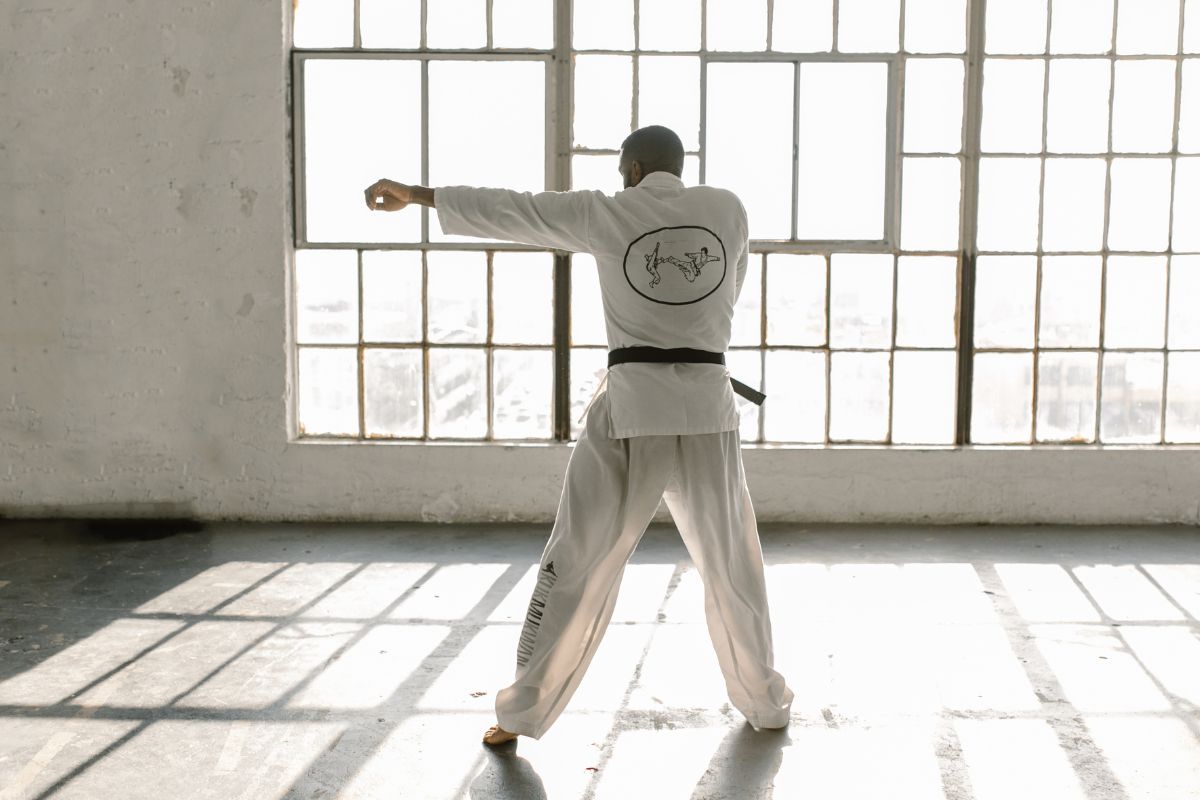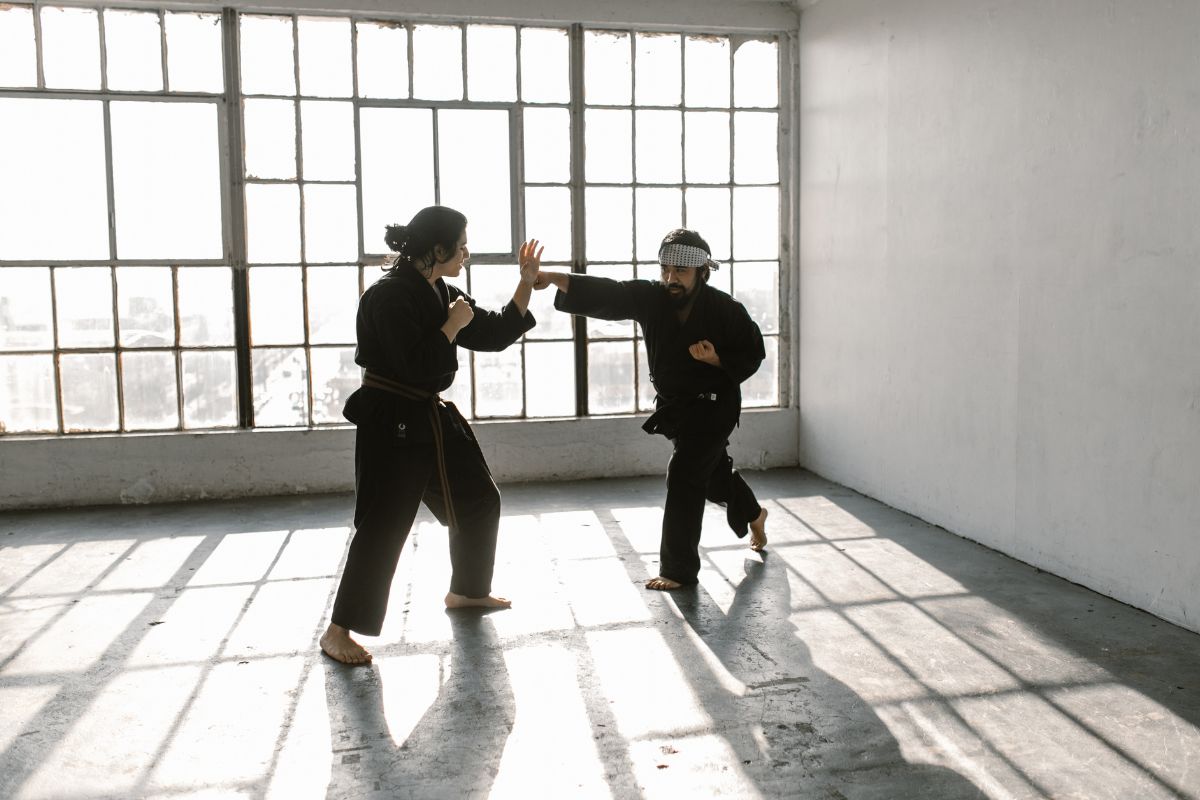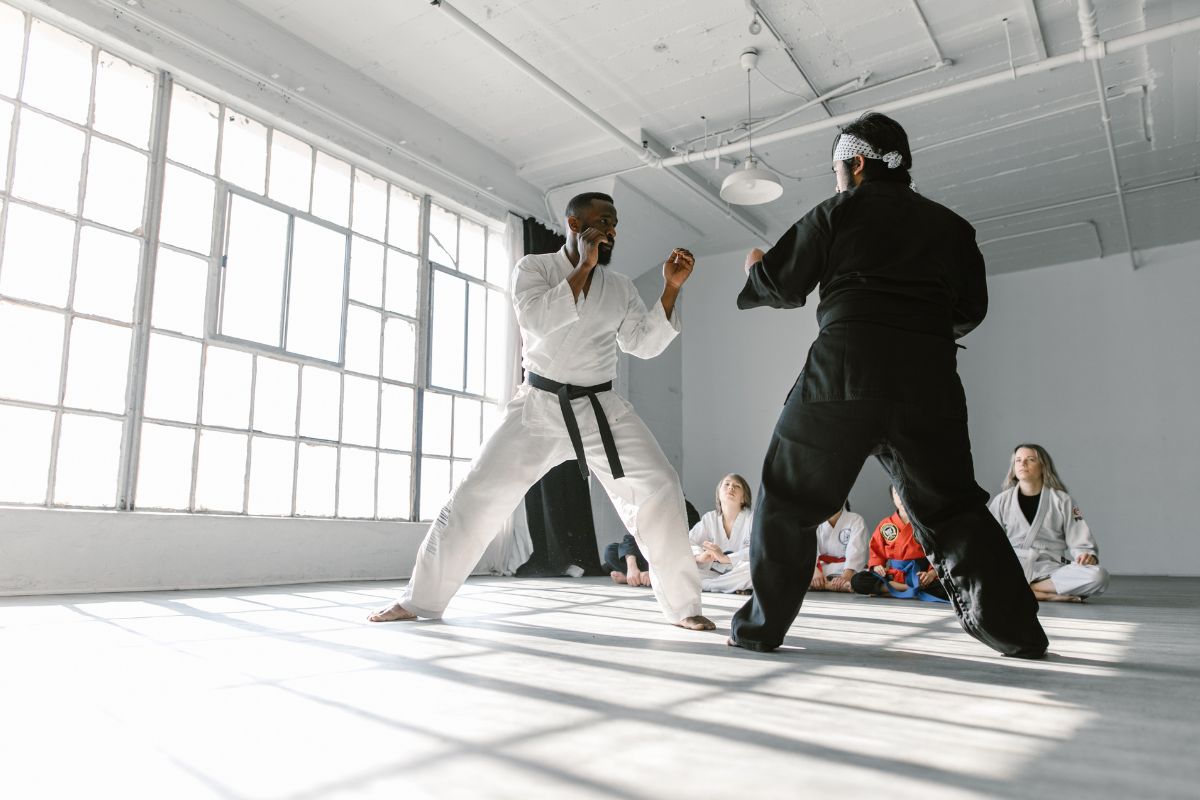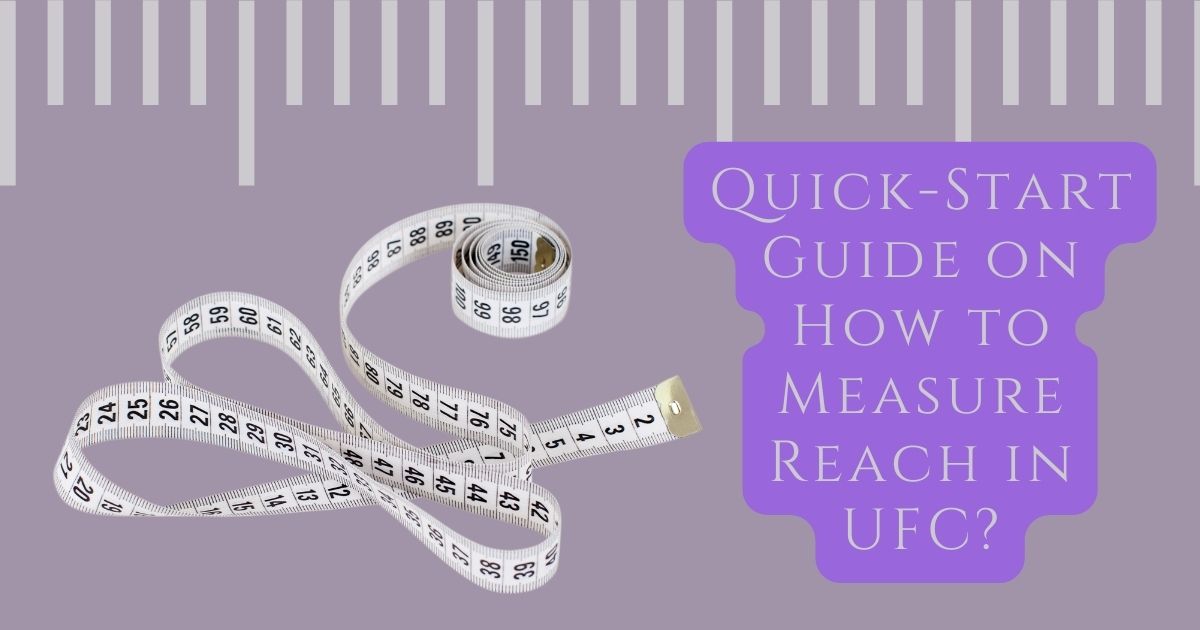What is Reach in UFC?
Ever wondered what reach is and how to measure reach in UFC? The reach in UFC refers to the distance between the tips of the middle fingers on each hand when the arms are horizontal to shoulder height.
The ratio of human height to reach is 1:1; however, MMA fighters typically have a more extended reach. Read this article to understand more about how to measure reach plus its advantages.

How to Measure Reach in UFC
How do you determine who has the greater reach in UFC? Simply extend your arms so that they are parallel to the ground. It is called to measure reach. It involves measuring the distance that runs from the tip of your left middle finger to the tip of your right middle finger. This is all you will require to determine how far your reach extends.
It’s a frequent misconception that a fighter’s reach and height are similar to one another. Nevertheless, height and reach are not the same characteristics or assessed in the same way. To determine a fighter’s reach, they must maintain a rigid stance and bring their arms up to shoulder level while keeping them perpendicular to their bodies.
After that, you determine the fighter’s reach by measuring the distance between the tip of the middle finger on one hand to the tip of the middle finger on the other hand. The ratio of a human being’s height to their reach is one-to-one.
This indicates that if you are six feet tall, you will likely have a reach of six feet (1.83 meters) as well. Nevertheless, there is not a hard and fast rule, particularly not among UFC fighters or martial artists in general.
UFC competitors have an average reach advantage of two to three inches (5.08 to 7.62 centimeters) over their opponents, which translates to a height-to-reach ratio that is closer to 1.05:1 than 1:1. Therefore, a typical UFC fighter who is 6 feet tall (1.83 meters) will have a reach of 74 inches.
We define the ape index as the difference between a person’s height and reach. To determine the ape index, you subtract a person’s height from their reach. Most UFC competitors have a positive ape index, measured in approximately two to three inches (5.08 to 7.62 centimeters) increments.
Still, a few have a negative ape index, which indicates that their height is greater than their reach. You can readily assess how great of an advantage a fighter has over others by looking at their ape index score compared to the scores of other competitors. Since heavyweights are far taller than lightweights, it stands to reason that they will possess a greater reach.
Nevertheless, this does not automatically imply that they have a higher ape index. The Octagon is where having a long reach may serve you well, which is why it’s more common to see fighters with a big ape index dominate than those with a negative ape index. Having a long reach can surely help you out in the Octagon.
The Longest Reach in UFC
Champions can come in various forms and dimensions, but as of late, the attention has focused on the reach and height of competitors. Examining a combatant’s ape index is the only way to estimate the length of their reach in a given bout.
Those competitors who compete in the two largest weight classes—light heavyweight and heavyweight—will, without a doubt, be the tallest, and as a result, they will have the most reach. Nevertheless, this does not necessarily imply that they have the greatest reach in relation to their height.
Dan Christison holds the record for the farthest reach in the history of the Ultimate Fighting Championship. His reach was 85 inches (215.9 centimeters), but he was only six and eight inches (15.24 and 20.32 centimeters) tall, so his ape index wasn’t all that impressive.
As a consequence of this, it was never really an advantage of that magnitude for him. On the other side, Jon Jones now holds the record for the most extended reach in the UFC with 84.5 inches (214.63 centimeters).
Given that he is only 6 feet and 4 inches (1 meter and 90 centimeters) tall, this gives him an incredible ape index of +8.5 inches (+21.6 centimeters), which is the second-highest ape index in the history of the UFC (only Sergey Pavlovich has a higher ape index with +9 inches (22.9 centimeters)).
The Wingspan of Notable UFC Fighters
Examining a combatant’s ape index is the only way to estimate the length of their reach in a given bout. Those competitors who compete in the two largest weight classes—light heavyweight and heavyweight—will, without a doubt, be the tallest, and as a result, they will have the most reach.
Nevertheless, this does not necessarily imply that they have the greatest reach in relation to their height.
Dan Christison 85 Inches (215.9 Centimeters)
Although Dan Christison is not as well-known as the other fighters described in this article, he had a highly successful career in mixed martial arts (MMA). He competed twice in the Ultimate Fighting Championship, and his second bout was an impressive victory over a previous champion named Frank Mir.
Dan earned a spot in the UFC by compiling a winning run of six fights, each of which he was the winner via submission. Dan made maximum use of his unbelievable score of 85 inches (215.9 centimeters) to achieve dominance in grappling exchanges and reach out.
The large arms resulted in a very active guard and excellent control of the top. Christison finished his career with 12 victories to his credit. This demonstrates that the reach advantage is beneficial on the feet and can be useful anywhere if a fighter uses the game plan.
Jon Jones
Jon Jones is the only fighter in the UFC who makes better use of his reach than he does. An opponent of Jones’s in the past named Chael Sonnen compared his reach to that of “a radioactive condor.”
On the strength of his physique, Jon has developed an outstanding game. Reach is a determinant of how a fighter utilizes it, and Jones has designed a technique set that capitalizes on his natural abilities.
Stefan Struve: 84.5 Inches (214.63 Centimeters)
Stefan Struve is the tallest fighter in the Ultimate Fighting Championship (UFC). He has a standing height of around 7 feet (2.1 meters). Struve has racked up some impressive victories in the UFC, and his highlight video is one that you shouldn’t miss out on seeing.
Thanks to the multiple ways he can utilize his reach, Stefan is a threat in all parts of a fight. Struve is famous for having some of the most impressive submissions ever seen in the Heavyweight division of the UFC. Even for the most active guards at the heavyweight division, he’s in the conversation.
The length of his limbs greatly enhanced his combat prowess of Struve. Even though the heavyweight division is famous for knockouts, Struve managed to win every round he fought.
Sergei Pavlovich: 84 Inches (213.4 Centimeters)
Enter Sergei Pavlovich and his 84 inches (213.4 centimeters) reach. The heavy-handed Sergei is a fighter to keep an eye on because he is off to a 2-1 start since joining the UFC in late 2018. That is when he became a member of the organization.
Sergei uses his incredibly long arms to keep adversaries at punching range, a technique that has been generally successful for him in the UFC, where he has not yet advanced to the second round.
Sergei has won 11 of his 14 bouts by striking his opponent, demonstrating that he makes full use of his reach. As a fighter on the taller end of the size range, it is to your advantage to compete in the heavyweight division, which features the biggest size variation among competitors.
Francis Ngannou: 83 Inches (210.8 Centimeters)
It is difficult to make the case that Francis Ngannou’s wingspan does not make him the most terrifying person in the world today. One of the many reasons why Francis is so frightening is that he is 6 feet 4 inches (one meter 93 centimeters) tall, and Francis Ngannou’s reach of 83 inches (210.8 centimeters). Ngannou is a formidable offensive threat.
In the past, he may have emphasized the extremely good power he possesses too much. Since then, Francis has developed into a skilled combatant who fights with patience and strategy. Francis makes excellent use of his long arms by fighting behind his jab and even scoring takedowns. His jab is his primary offensive weapon.
With each bout, Francis appears to advance his game and become more strategic, putting him on track to become the best heavyweight of all time.
Cheick Kongo: 81 Inches (205.7 Centimeters)
Cheick Kongo is another attacker who capitalized on his aggressiveness and used it to his advantage. Fans should never write off Kongo as he is one of those fighters who can always surprise them, as evidenced by his fight against Pat Barry. He is a well-rounded righter who makes excellent use of the space afforded to him by his wingspan.
The striking of Cheick was really what put some of the finishing touches on his matches and gave them a sense of conclusion. Any fighter will have difficulty dealing with exceptional strikers with unnaturally huge reaches. You’re dealing with a formidable obstacle when you add a level of Cheick Kongo kickboxing to the mix.
Curtis Blaydes is 80 Inches (203.2 Centimeters)
Curtis Blaydes has a wingspan of 80 inches (203.2 centimeters) and a leg reach of 46 inches (116.8 centimeters), but he utilizes these advantages somewhat differently. Curtis is not a slouch when he’s on his feet, and while he’s working hard to improve his striking, he primarily uses his long and massive physique to control opponents when they are on the ground.
When Blaydes uses his elbows to cut down his opponents, he is at his absolute best. When it comes to grappling situations, Blaydes has made excellent use of the fact that he can reach his opponent and slip his arms through their guard.
Alongside the actual effort, there are also the material rewards. Blaydes is likely to become the Heavyweight champion in the not-too-distant future.
Alistair Overeem: 80 Inches (203.2 Centimeters)
You will definitely remember Alistair Overeem as one of the most accomplished heavyweight boxers of all time. The incredibly stunning background that Alistair comes from, combined with his versatility, makes for a perfect blend for his profession. Overeem exhibited polished technique while scoring 80 points reach.
In addition to this, a leg reach of 46 inches (116.8 centimeters) “was a significant component in his striking. Overeem utilized his reach to its full potential. His kicks and knees were clear. Overeem has amassed a significant number of finishes because of their length.
An excellent illustration of this is when Overeem battled Mark Hunt. Because Hunt was a shorter competitor, the knee upstairs proved an effective move, ultimately leading to Alistair’s triumph.
Israel Adesanya
Israel Adesanya exemplifies the role of a striker to a tee. The Adesanya attack involves doing the appropriate reads and minimizing any unnecessary movement. Israel Adesanya’s wingspan of 80 inches (203.2 centimeters) and a leg reach of 44.5 inches (113 centimeters) are courtesy of an educated and analytical mind.
Middleweight contenders should be pretty concerned about that information. Israel makes impeccable use of his reach. To set up attacks, he will not only prod his jab or teep out, but he will also employ these measurements to defend himself.
Adesanya will regularly bend back to avoid getting kicked, and this causes the kicks to come dangerously close to him. Instead of throwing himself off balance to escape his opponents, Israel causes them to miss by a fraction of an inch.
George St-Pierre
Georges St. Pierre, the current UFC Welterweight Champion, has dominated the 170-pound (77.1 kilograms) weight class for almost eight years.
Despite staying on the sidelines due to a knee injury, he is still highly regarded and consistently rated as one of the top three MMA fighters overall by fans and experts. GSP reach is 76 inches (193 centimeters), whereas Bones reach is 84.5 inches (214.6 centimeters). The height-to-reach ratio for GSP is 71 to 76 inches (180.3 to 193 centimeters).

The Benefits of a Long Reach in UFC
MMA competitors like Francis Ngannou, Jon Jones, and Conor McGregor have a high ape index, indicating that their reach is far greater than their height. This can be an enormous advantage, particularly for the tall players, to begin with, such as Bones and Ngannou.
If you have a height and reach advantage over your opponents, they will likely have a harder time punching and kicking you because they won’t be able to reach you as easily. When you have the luxury of keeping your opponent at a safe distance, where they cannot approach you, but you can reach them with relative ease, it is much simpler to set up your defense.
Combatants with a long reach have an easier time defending themselves and can better prepare their strikes. If you have a long reach, you can probe and test your opponents more thoroughly without running the risk of being instantly revealed. If they want to cause any damage, it is up to them to close the distance and shoot inside.
This allows you to move laterally and attack them when they are vulnerable due to the fact that they are shooting inside. To add to this, boxers who have a longer reach typically have a stronger punch as well. This is because physics dictates that a larger “lever” results in greater swing and torque at the end of a blow, resulting in greater impact force.
To maximize their strength, long-range fighters often have to compromise their explosiveness. However, all it takes is one solid blow to put an opponent out of commission. Just look at what Conor McGregor accomplished when he was at his peak.
Conor McGregor’s reach made it seem like knockouts were commonplace in the featherweight and lightweight divisions, but that’s not the case. It’s not hard to see how having a longer reach might improve your striking, but what about your grappling?
To begin, McGregor’s reach helps him in defending against falling. Maintaining a safe distance from his adversary forces them to take more aggressive action to close the gap and defeat his opponents.
Because of the distance between you, you have a fraction of a second more to telegraph your opponent’s movement and avoid going down. In some cases, you may even be able to knock off a counter combination. Additionally, it makes it easier for you to score takedowns.
Every inch of grip with your fingers you can acquire matters when trying to go for a double leg from the clinch position. A longer reach gives you a better hold and makes it much simpler to perform takedowns.
Last but not least, in the same way, you’ll have more power in your punches, and you’ll also have a higher grip force when trying to submit your opponent. The idea remains the same: a longer lever provides greater torque and a stronger grip, particularly on chokes, where an advantage of even an inch can make a significant difference.
The Ape Index Explained
What Exactly Constitutes the ape index? The ape index is a measurement that determines how your height corresponds to your wingspan (also known as arm span). It is general knowledge that the wingspan of the majority of people is proportional to their height, which indicates that most people have a neutral ape index or, to put it another way, an ape index ratio of 1.
The ape index is a measurement that compares your arm span or reach to your height. Taking the height and subtracting it from the arm span is a procedure that is frequently in use during calculations. Most persons have a neutral size ratio. However, certain people have arm spans far greater than their heights. These people are a rare exception.
It seems normal for a person to have an ape index of approximately 1.0, which indicates that their arms are the same length as their height. A person with a high Ape Index demonstrates that their arms are significantly longer than you should give them their height. Several competitors in the UFC have an Ape Index that is significantly higher than average.
It is typical for a boxer to have a reach that is 2.5 inches (6.4 centimeters) longer than a normal guy of his height. Consequently, this provides most competitors with a positive ape index of 2.5 inches (6.4 centimeters). This does not imply that engaging in combat extends one’s reach.
People with access to longer weapons simply have an edge in action and, as a result, are more likely to engage in violent conflict. Although boxers with shorter reach can land devastating hooks and uppercuts, those with longer arms have more powerful straight punches, longer hooks, and longer overhands at their disposal.
Because of this, they build up a tremendous amount of momentum when they throw one of these lengthy punches. This ultimately increases the power of the blow.

Conclusion
In most cases, the combatant with a longer reach will have an advantage over their opponent. They can control the distance, which might put a shorter opponent at a disadvantage if they cannot effectively narrow the gap between them. The competitor loses this advantage has the shorter reach can get closer to their opponent.

